Sometimes, “in the middle of nowhere’’ is just an expression. At Ayers Rock, it’s reality.
The 1,142-foot high mound in the Australian Outback is a five-hour drive from the nearest town, Alice Springs, and almost 1,000 miles from the closest major city, Adelaide. Tourists stay at Ayers Rock Resort, a nearby complex that includes three hotels, a campground, restaurants, shops and a small museum dedicated to the local Aboriginal history and culture.
People from all over the world come to this sparsely populated desert in the middle of the country to see the ancient sandstone rock that is featured on more posters, postcards and paintings than any Australian landmark except the Sydney Opera House.
Pat and I flew here from Cairns to see the rock and experience the Field of Light, a solar-powered light show that illuminates an area the size of 10 football fields with 50,000 spindly stems crowned with colorful frosted glass spheres.
We arrived at our hotel in the morning, took a shuttle bus tour of the complex and then visited the Wintjiri museum and art gallery, which chronicles the ecology of the area, the importance of Ayers Rock to the indigenous people and the development of the area as a tourist destination.
Ayers Rock, known as Uluru by the local Pitjantjatjara tribe, is 600 million years old and has been considered a sacred site by indigenous people for thousands of years. But the white man didn’t discover it until 1873, when explorer William Gosse named it after the chief secretary of South Australia.
Tourism began at Ayers Rock in the 1950s and the resort opened in 1984. The following year, the Australian government returned ownership of Ayers Rock to the local Aborigines, with an agreement they would lease the land to the national Parks and Wildlife Service for the next 99 years. A small community of Pitjantjatjara still live near the rock, though they’ve forsaken their nomadic traditions for homes and cars.
Our tour package included “A Night at Field of Light,’’ which featured a sunset view of Ayers Rock, an outdoor gourmet dinner, a guide to the star-studded night sky and a stroll through artist Bruce Munro’s dazzling light installation. The green, red, blue and yellow lights form a surreal landscape, like a field of shining, knee-high cornstalks. You walk through a maze of dirt paths, hoping not to get lost in the dark and being forced to spend the night in the desert.
We didn’t get back to our hotel until 11 p.m., so we didn’t get much sleep before waking for our early morning tour of Ayers Rock, which is a 10-minute ride from the resort.
Our tour van stopped a short distance from the rock to watch a brilliant, rainbow-tinged sunrise before heading to the foot of Ayers Rock. Up close, it looks like an orange-tinted loaf of bread. One side is mostly smooth, while the other is pockmarked with cave-like indentations and markings that represent creation stories told by the indigenous people.
Park rangers discourage tourists from climbing on the rock because it’s dangerous and considered a sacrilege by the local Aboriginal tribe. However, many visitors ignore the advice and we saw several dozen people climbing during our visit. Fortunately, the activity will be banned next year.
About 20 miles west of Uluru, in the same national park, is an even larger rock formation called Kata Tjuta. It has 36 domes, covers 8.2 square miles and rises to 1,791 feet at its summit. Kata Tjuta isn’t as famous as Uluru, but is just as impressive. (That’s what I’m told, at least. We only saw it from a distance.)
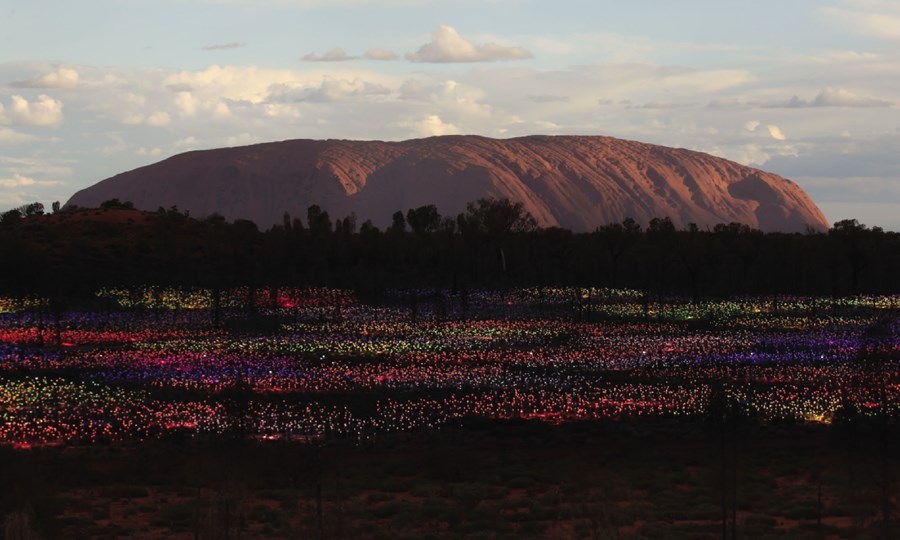

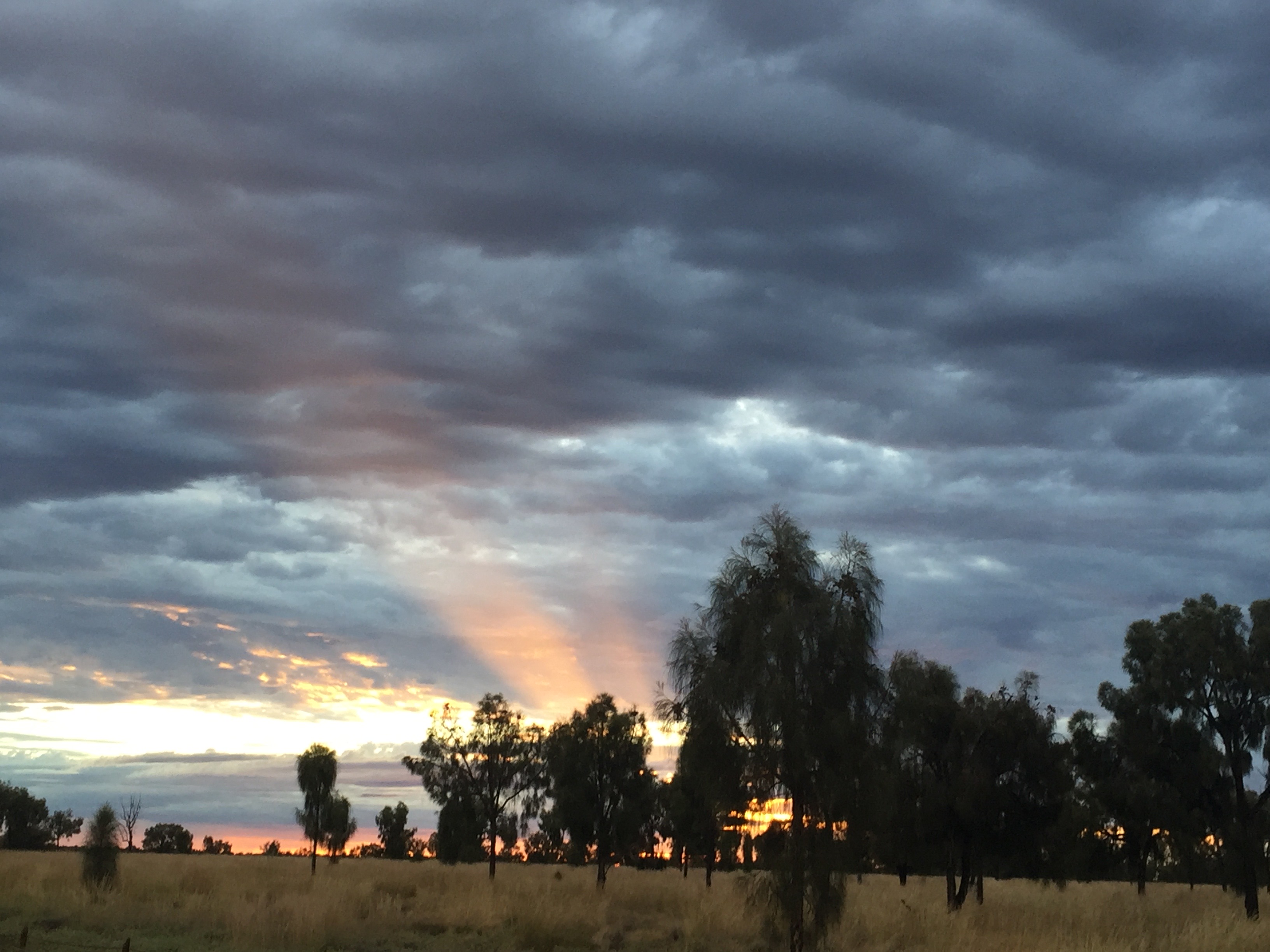
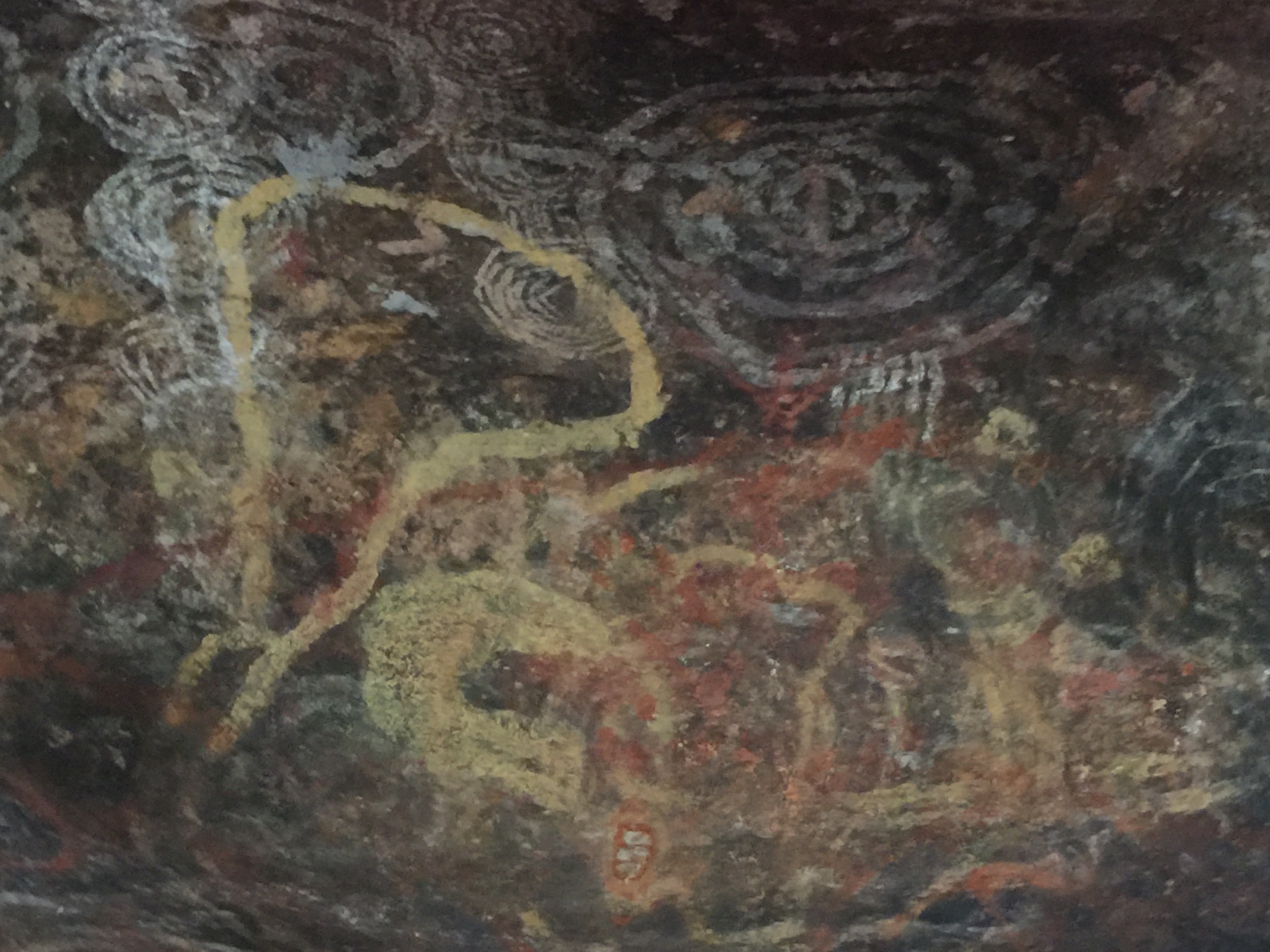
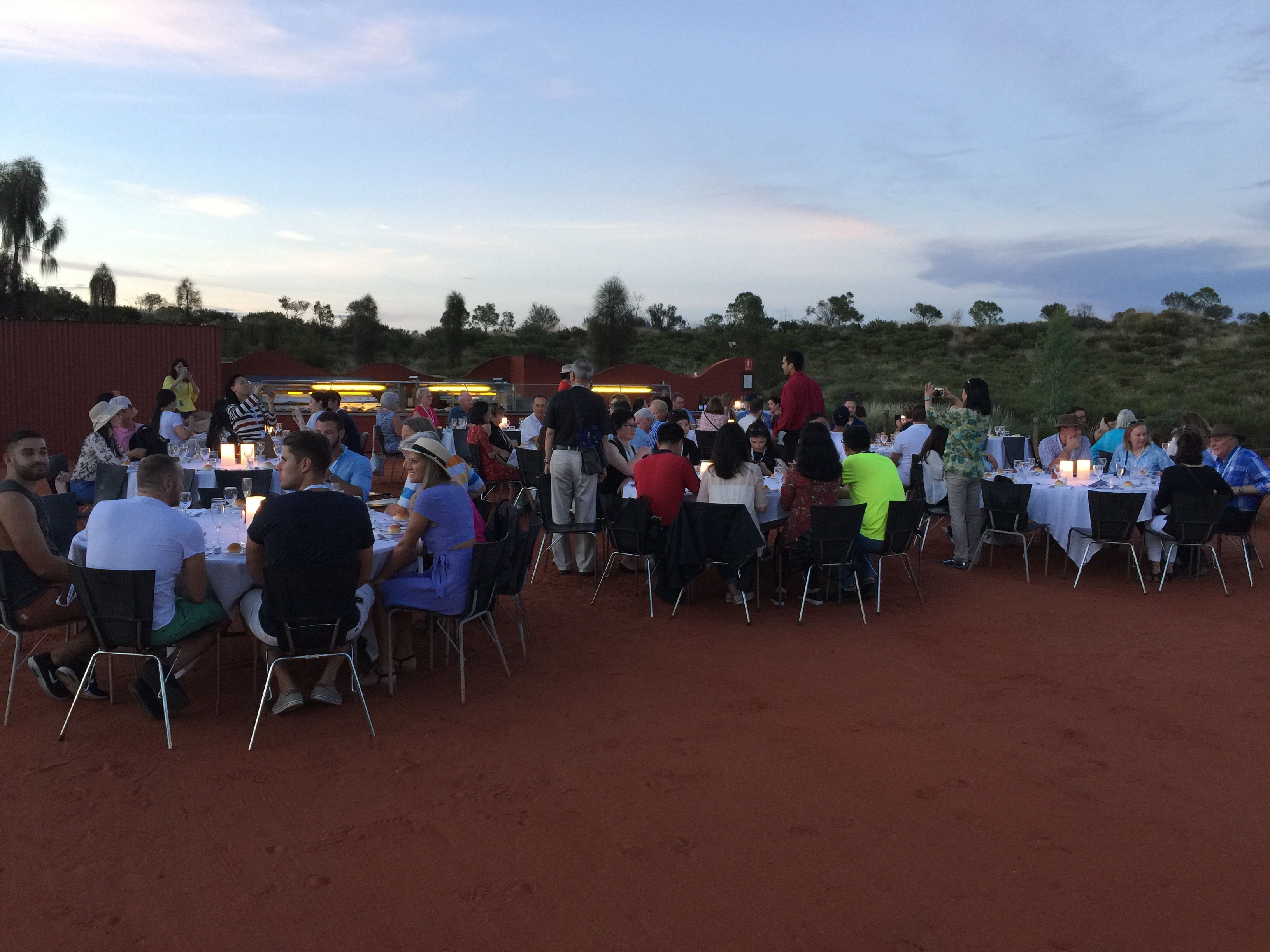
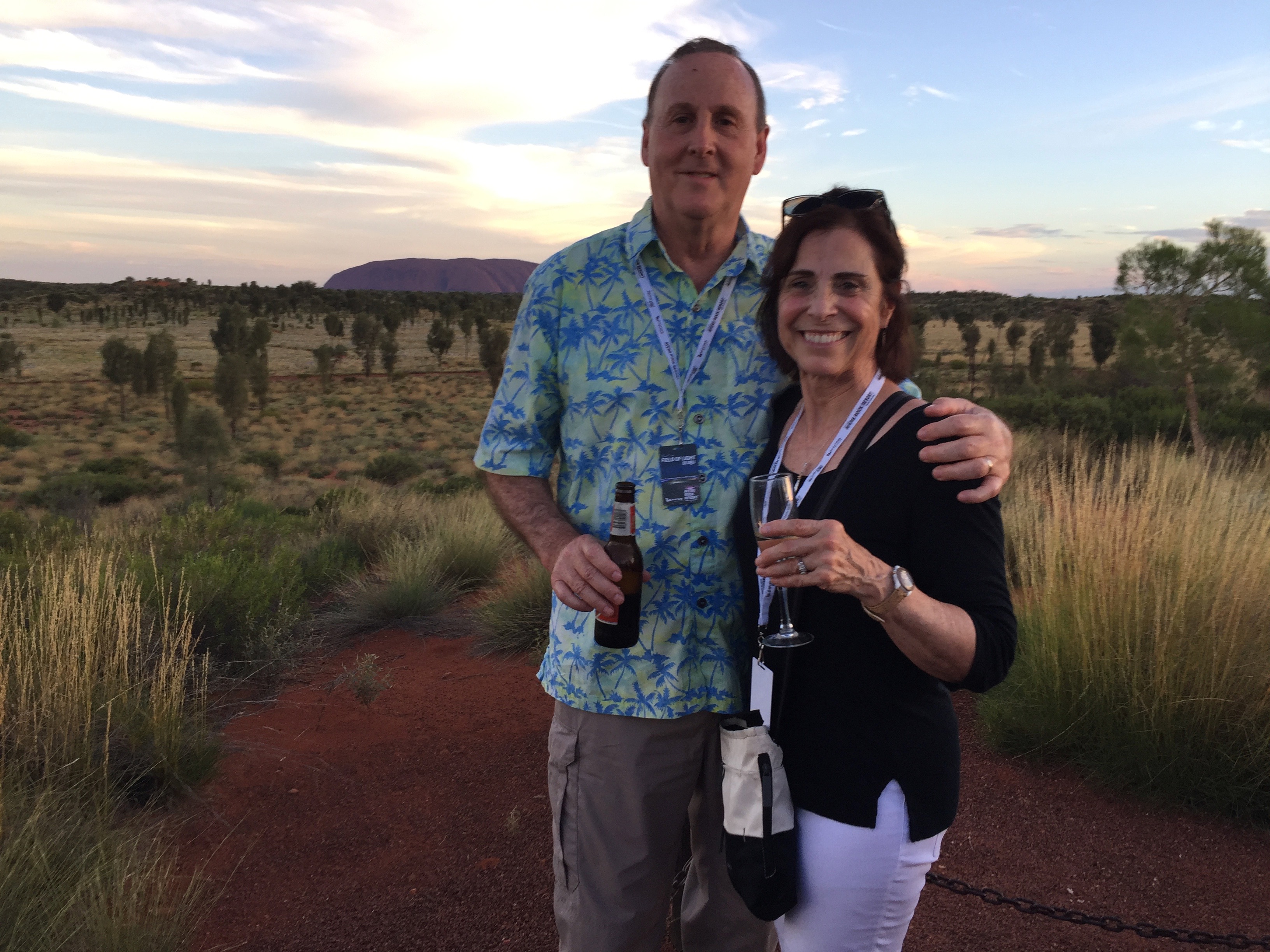
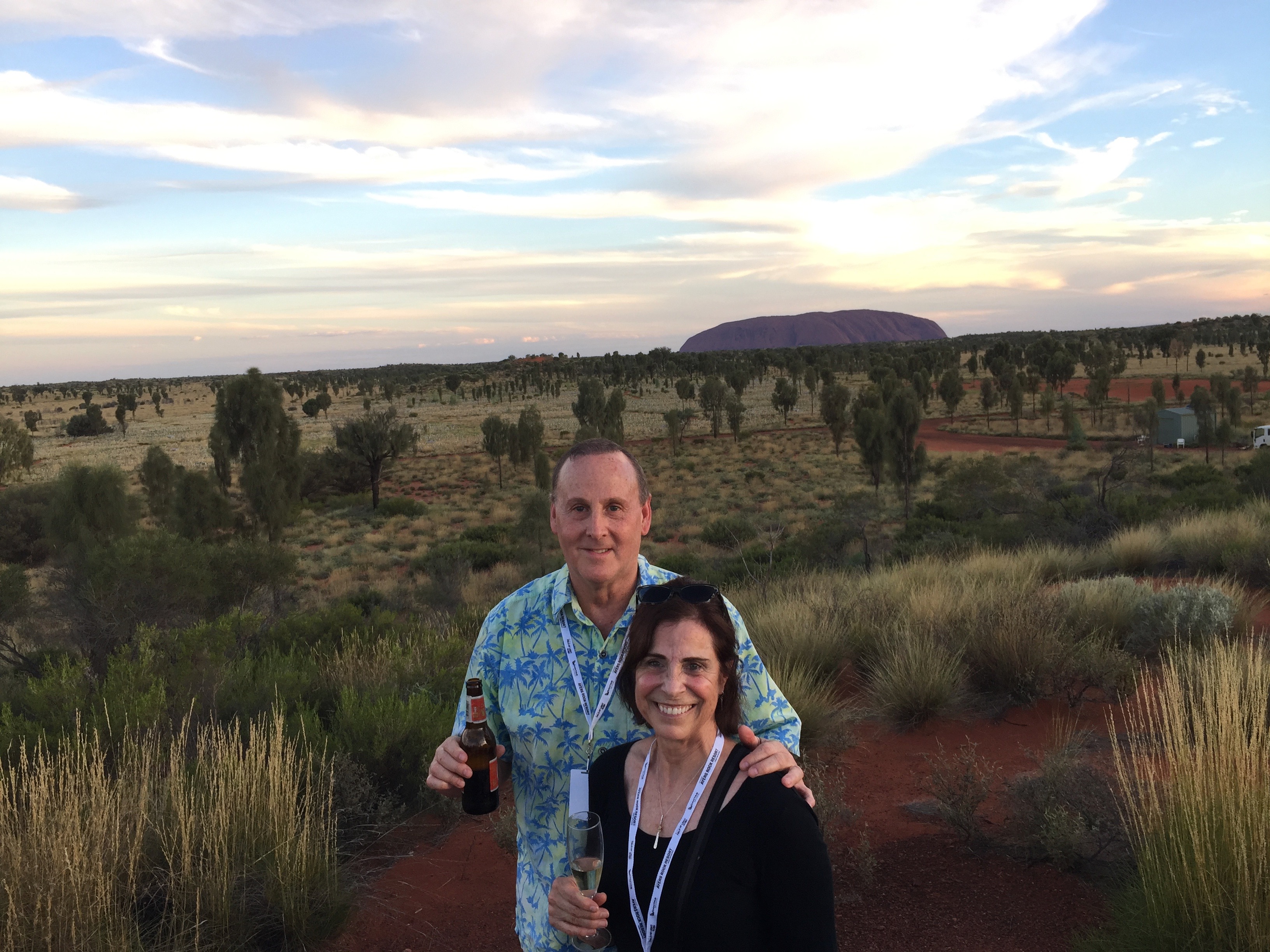

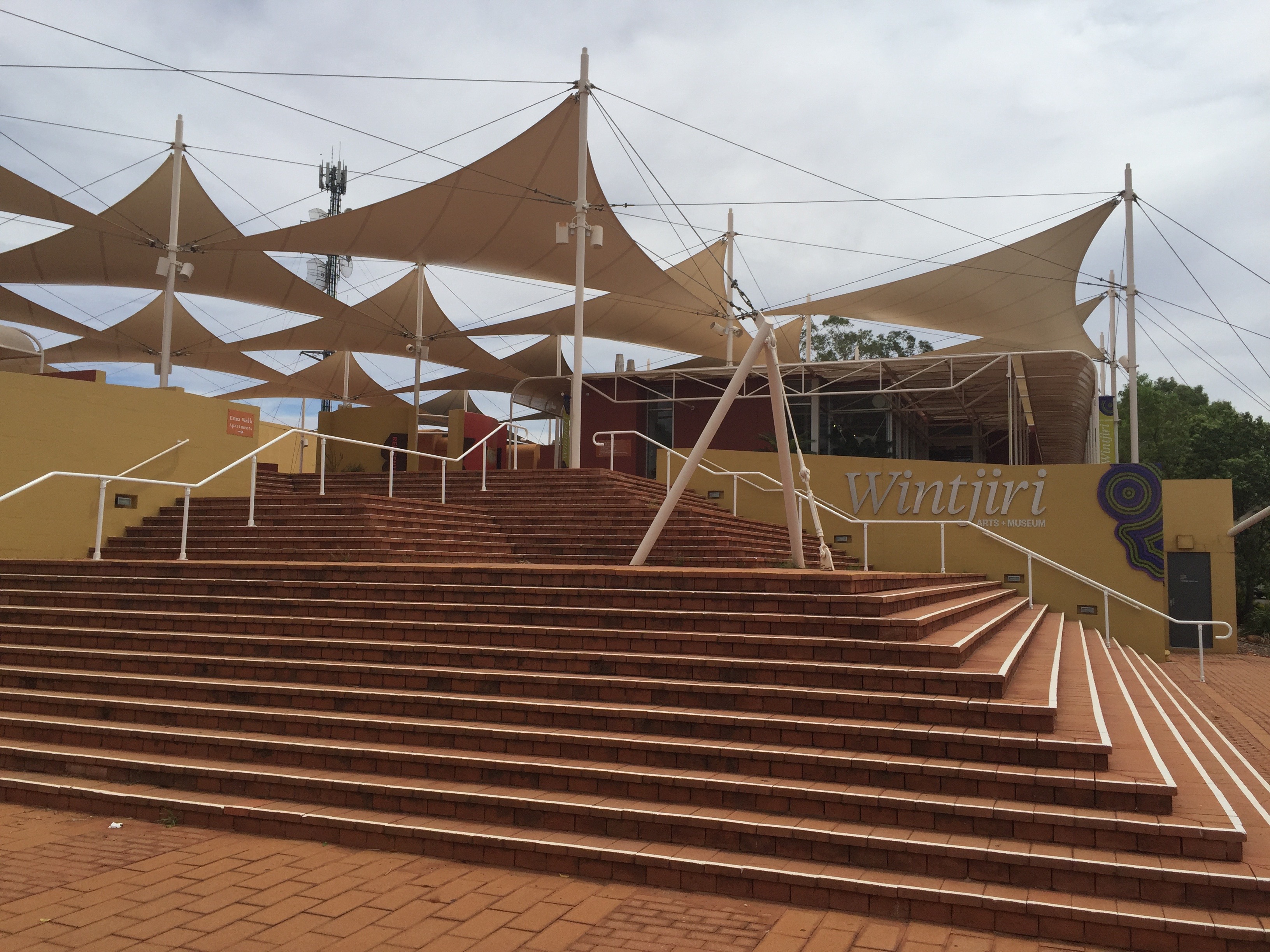

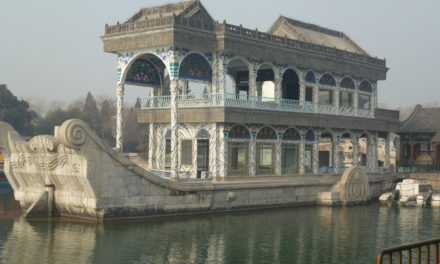


More! More! You guys look happy and healthy. You must be Superman and Superwoman. Please do tell us more – in your free time. Ha ha.
Breathtaking!